Reply To:
Name - Reply Comment
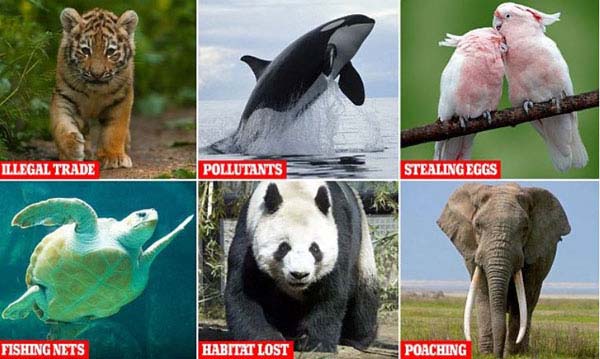
Humans have wiped out so many animals that the planet is on the verge of the first ‘mass extinction’ since the age of the dinosaurs, conservationists have warned.
By the end of the decade, seven out of every ten of the world’s mammals, fish, amphibians, reptiles and birds will have been wiped out, according to the biggest ever report into extinction.
Some of the most threatened species include African elephants, tigers, mountain gorillas and giant pandas, said the report by the WWF and the Zoological Society of London (ZSL).
Its grim findings were described as a wake-up call to help save Earth’s remaining animals – before it is too late.
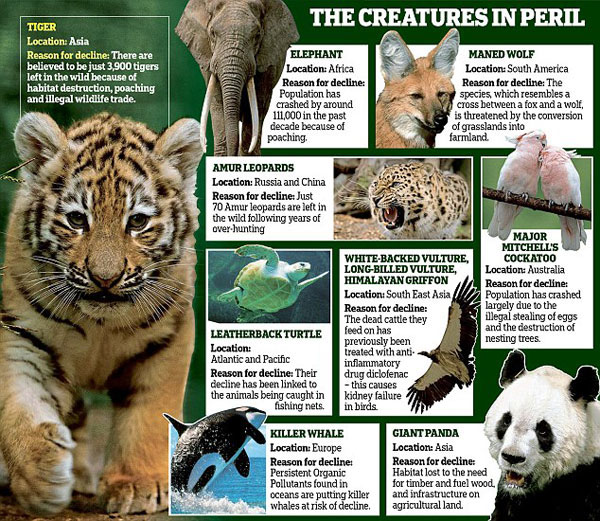
The study assessed 14,152 populations of mammals, birds, fish, amphibians and reptiles.
Numbers fell by 58 per cent between 1970 and 2012 – and are dropping by around 2 per cent every year, with no sign of any slowdown.
By 2020, populations of vertebrate species could have fallen by 67 per cent over the 50-year period unless action is taken to reverse the damaging impacts of mankind, the Living Planet report found.
These include poaching, farming, over-fishing, deforestation, climate change, the ditching of waste plastic, chemical and air pollution – behaviours that are affecting humans too.
Mike Barrett, director of science and policy at WWF-UK, said: ‘For the first time since the demise of the dinosaurs ... we face a global mass extinction of wildlife.
‘We ignore the decline of other species at our peril – for they are the barometer that reveals our impact on the world that sustains us.
‘Humanity’s misuse of natural resources is threatening habitats, pushing irreplaceable species to the brink and threatening the stability of our climate.’
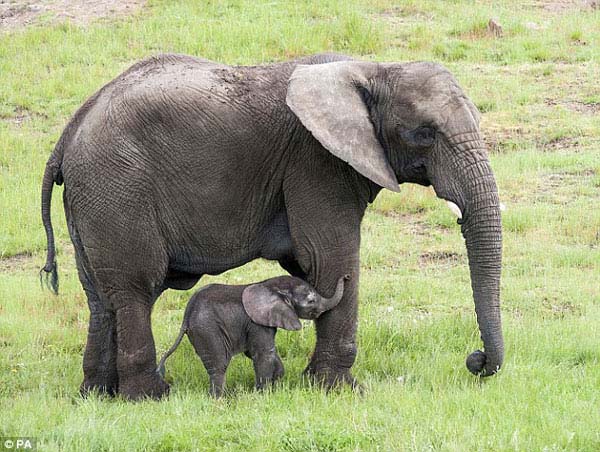
But he added: ‘We know how to stop this. It requires governments, businesses and citizens to rethink how we produce, consume, measure success and value the natural environment.’
The African elephant population has fallen by 111,000 in the past decade, mainly down to poaching, with just 415,000 left.
Other animals are even more rare. There are now just 3,900 tigers in the world and 1,864 giant pandas.
Shockingly the numbers of one of the most at risk species, the Amur leopard, are down to just 70.
Overall, terrestrial species have seen populations drop by 38 per cent between 1970 and 2012. Freshwater species fared even worse, falling by 81 per cent.
For marine creatures – based on 6,170 populations of 1,353 species of fish, birds, mammals and reptiles – the report found a 36 per cent decline.
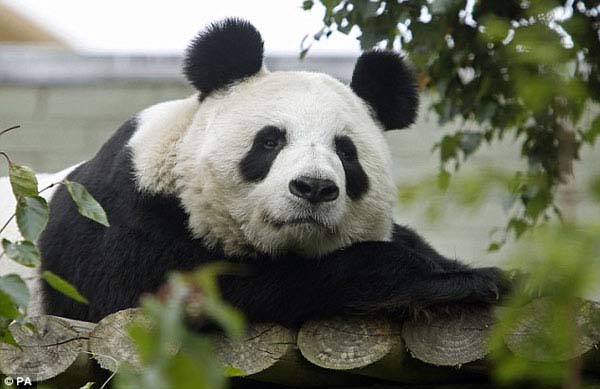
The worst years were between 1970 and 1980, however the decline has been stabilised thanks to efforts to stop overfishing.
On a positive note, animal species living in African grasslands have increased slightly since 2004, thanks to conservation efforts.
The report also highlights the success of habitat protection and strict hunting controls in Europe.
Professor Ken Norris, director of science at ZSL, said: ‘Human behaviour continues to drive the decline of wildlife populations globally, with particular impact on freshwater habitats.
‘However, these are declines – they are not yet extinctions – and this should be a wake-up call to marshal efforts to promote the recovery of these populations.’
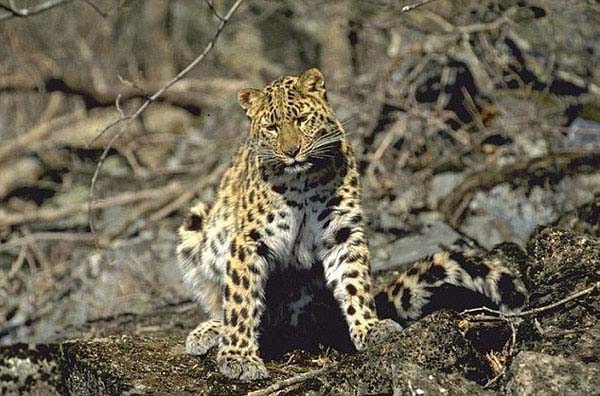
Source: Daily Mail